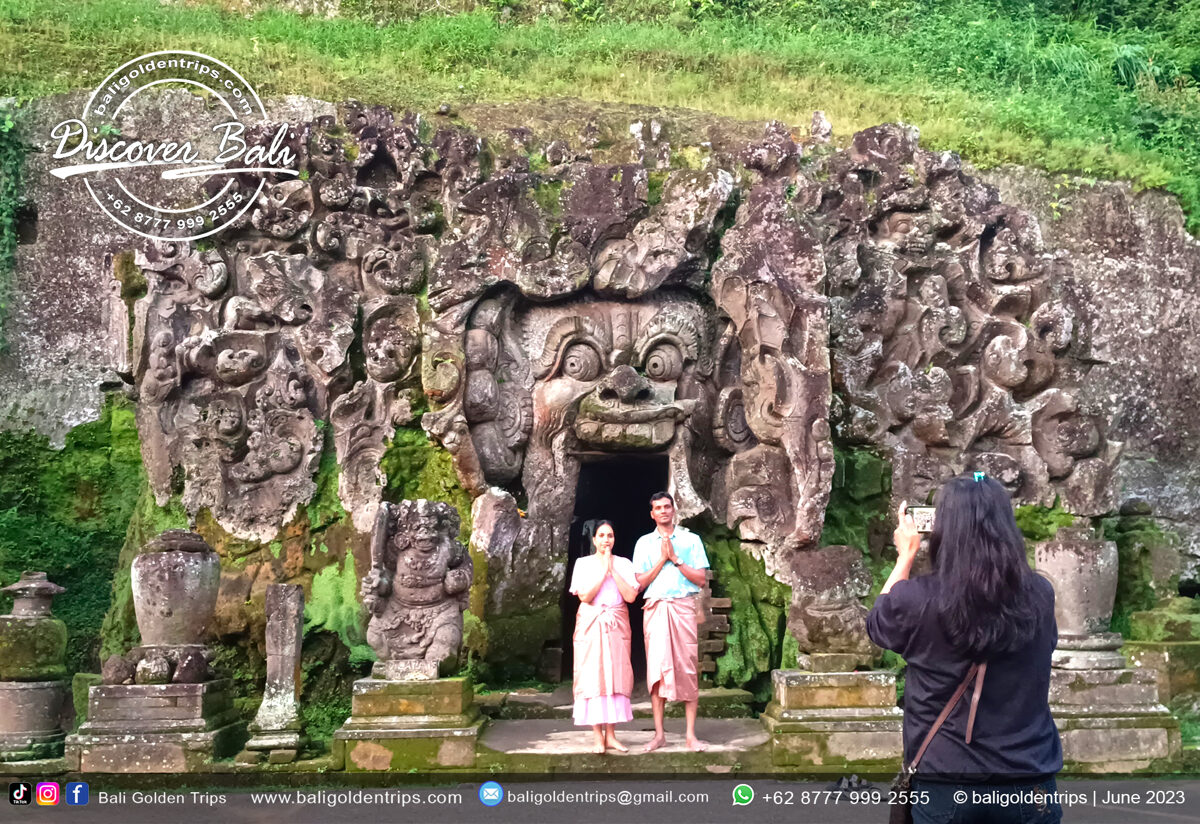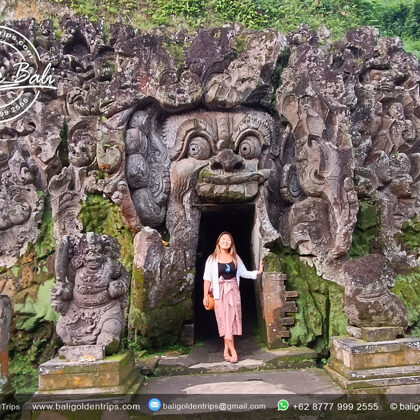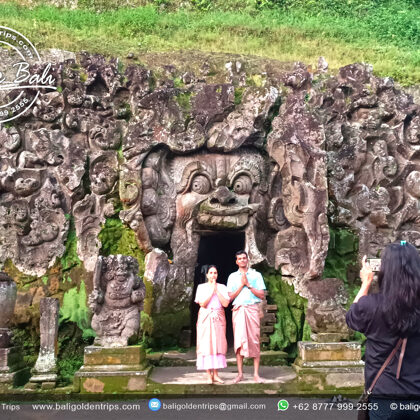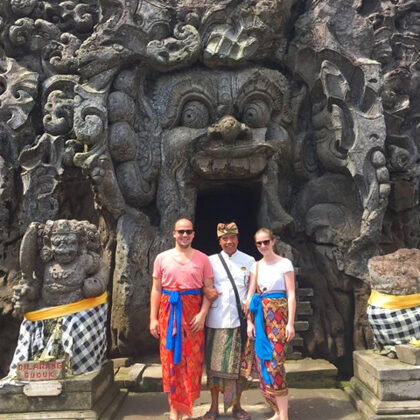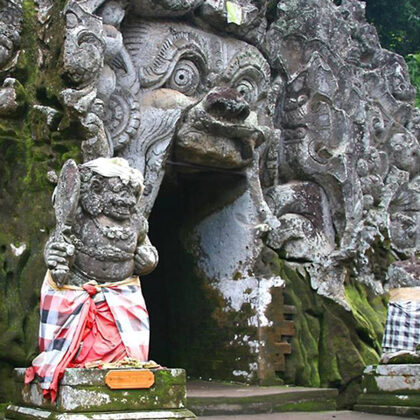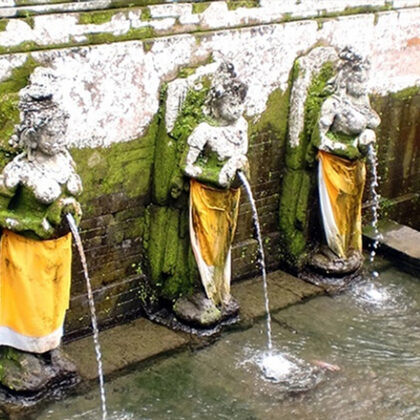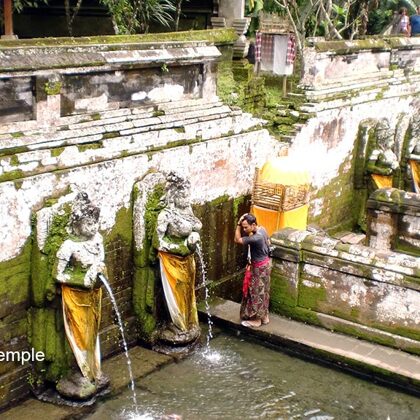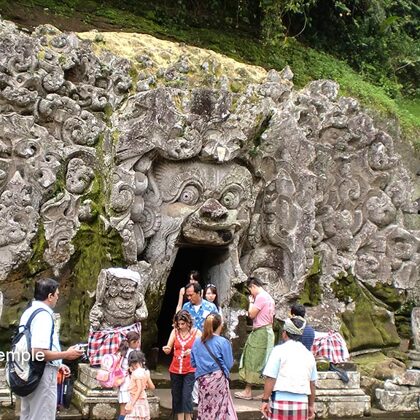The most distinctive feature of the Goa Gajah Temple is its entrance, which resembles the mouth of a menacing demon or an elephant. The name "Goa Gajah" translates to "Elephant Cave" in Indonesian, although there is no evidence linking the cave to elephants. The entrance is adorned with intricate stone carvings and mythical creatures, showcasing the influence of both Hindu and Buddhist art.
Once you pass through the cave-like entrance, you'll enter a T-shaped cave with narrow passageways. Inside, you'll find a small stone idol of Ganesha, the Hindu deity with an elephant head, along with several Hindu and Buddhist relics. The cave walls also feature ancient meditation niches and a bathing pool.
The temple complex extends beyond the cave, encompassing beautiful gardens, shrines, and bathing pools. There are lush green rice fields surrounding the site, adding to its serene and picturesque atmosphere. Visitors can explore the temple grounds, take a leisurely stroll, and admire the traditional Balinese architecture and peaceful surroundings.
It's important to note that the Goa Gajah Temple is an active place of worship for both Hindus and Buddhists. Therefore, it is advisable to dress modestly and respectfully when visiting the temple. Sarongs and waist sashes are provided at the entrance for visitors to cover their legs and waist as a sign of respect.
In conclusion, Goa Gajah Temple, or the Elephant Cave Temple, is a fascinating historical and cultural site in Bali. Its unique cave entrance, intricate stone carvings, and serene surroundings make it a must-visit destination for those interested in Bali's rich heritage and spirituality.

